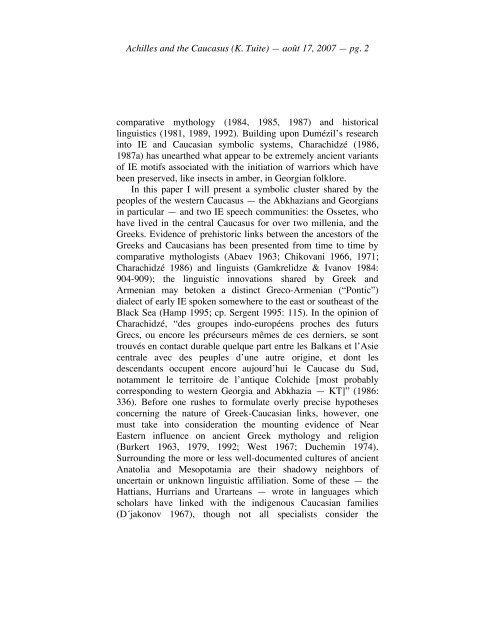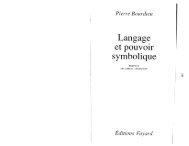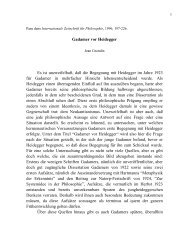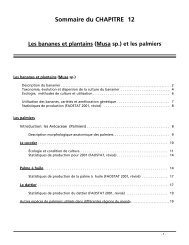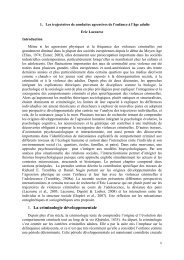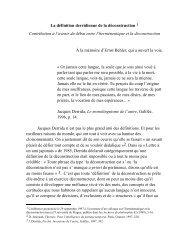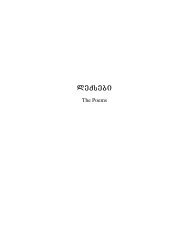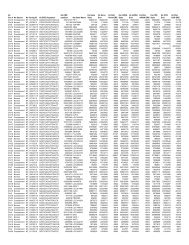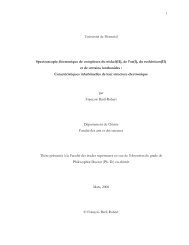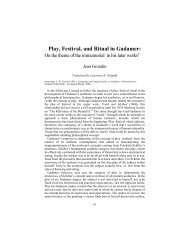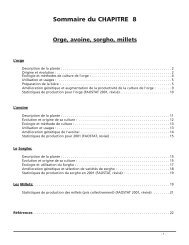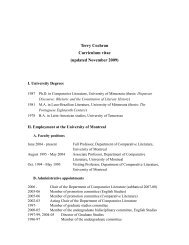Achilles and the Caucasus - Université de Montréal
Achilles and the Caucasus - Université de Montréal
Achilles and the Caucasus - Université de Montréal
You also want an ePaper? Increase the reach of your titles
YUMPU automatically turns print PDFs into web optimized ePapers that Google loves.
<strong>Achilles</strong> <strong>and</strong> <strong>the</strong> <strong>Caucasus</strong> (K. Tuite) — août 17, 2007 — pg. 2<br />
comparative mythology (1984, 1985, 1987) <strong>and</strong> historical<br />
linguistics (1981, 1989, 1992). Building upon Dumézil’s research<br />
into IE <strong>and</strong> Caucasian symbolic systems, Charachidzé (1986,<br />
1987a) has unear<strong>the</strong>d what appear to be extremely ancient variants<br />
of IE motifs associated with <strong>the</strong> initiation of warriors which have<br />
been preserved, like insects in amber, in Georgian folklore.<br />
In this paper I will present a symbolic cluster shared by <strong>the</strong><br />
peoples of <strong>the</strong> western <strong>Caucasus</strong> — <strong>the</strong> Abkhazians <strong>and</strong> Georgians<br />
in particular — <strong>and</strong> two IE speech communities: <strong>the</strong> Ossetes, who<br />
have lived in <strong>the</strong> central <strong>Caucasus</strong> for over two millenia, <strong>and</strong> <strong>the</strong><br />
Greeks. Evi<strong>de</strong>nce of prehistoric links between <strong>the</strong> ancestors of <strong>the</strong><br />
Greeks <strong>and</strong> Caucasians has been presented from time to time by<br />
comparative mythologists (Abaev 1963; Chikovani 1966, 1971;<br />
Charachidzé 1986) <strong>and</strong> linguists (Gamkrelidze & Ivanov 1984:<br />
904-909); <strong>the</strong> linguistic innovations shared by Greek <strong>and</strong><br />
Armenian may betoken a distinct Greco-Armenian (“Pontic”)<br />
dialect of early IE spoken somewhere to <strong>the</strong> east or sou<strong>the</strong>ast of <strong>the</strong><br />
Black Sea (Hamp 1995; cp. Sergent 1995: 115). In <strong>the</strong> opinion of<br />
Charachidzé, “<strong>de</strong>s groupes indo-européens proches <strong>de</strong>s futurs<br />
Grecs, ou encore les précurseurs mêmes <strong>de</strong> ces <strong>de</strong>rniers, se sont<br />
trouvés en contact durable quelque part entre les Balkans et l’Asie<br />
centrale avec <strong>de</strong>s peuples d’une autre origine, et dont les<br />
<strong>de</strong>scendants occupent encore aujourd’hui le Caucase du Sud,<br />
notamment le territoire <strong>de</strong> l’antique Colchi<strong>de</strong> [most probably<br />
corresponding to western Georgia <strong>and</strong> Abkhazia — KT]” (1986:<br />
336). Before one rushes to formulate overly precise hypo<strong>the</strong>ses<br />
concerning <strong>the</strong> nature of Greek-Caucasian links, however, one<br />
must take into consi<strong>de</strong>ration <strong>the</strong> mounting evi<strong>de</strong>nce of Near<br />
Eastern influence on ancient Greek mythology <strong>and</strong> religion<br />
(Burkert 1963, 1979, 1992; West 1967; Duchemin 1974).<br />
Surrounding <strong>the</strong> more or less well-documented cultures of ancient<br />
Anatolia <strong>and</strong> Mesopotamia are <strong>the</strong>ir shadowy neighbors of<br />
uncertain or unknown linguistic affiliation. Some of <strong>the</strong>se — <strong>the</strong><br />
Hattians, Hurrians <strong>and</strong> Urarteans — wrote in languages which<br />
scholars have linked with <strong>the</strong> indigenous Caucasian families<br />
(D´jakonov 1967), though not all specialists consi<strong>de</strong>r <strong>the</strong>


